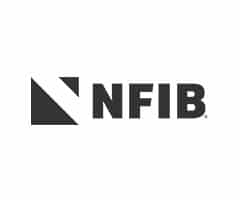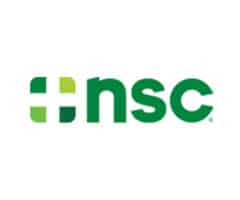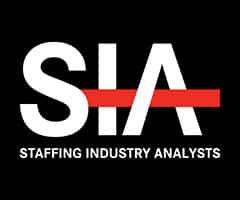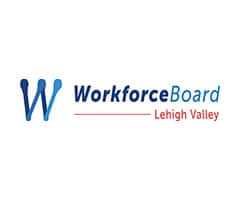If Covid has thrown your job, company or career for a loop, this may be the moment to think about not just a next move, but a larger career change.
Of course, such a move is impossible—or at least close to it—for many people who don’t have the contacts or resources to make it happen. But for those lucky enough to take advantage of it, technology can help address some of the obstacles to making a midcareer shift—especially right now, when so much of the professional world has moved entirely online out of necessity.
By putting a range of professional conversations and communities at your fingertips, the internet makes it much easier to figure out which fields are the best fit for your interests and talents. And through low-risk, low-cost options for trying out new professional contexts—such as taking online courses or doing remote pro bono work—you can assess a new career direction before you take a leap.
Here is how to tap into all that to help plan a career change.
Assess your options
Before you start to make a move, get a feel for your options by eavesdropping on other fields and getting familiar with the cultures and opportunities they offer, as well as the kinds of people and tasks that are involved.
An easy place to start is by joining professional groups on LinkedIn, so you can watch (or join in) the online conversation; many groups will welcome anyone who asks to come on board. Following a LinkedIn group for environmental lawyers, for instance, might confirm your hopes that this is a field you would like to leap into—or it might reveal political squabbles you’d find intolerable. Likewise, if you have friends or colleagues in this field, pay closer attention to them online and see what they share and respond to.
Be sure to follow them on LinkedIn and Twitter, as well as Facebook. Maybe the occasional posts you see from your management-consultant friends make their fast-paced work look appealing, but reading the full stream of their working lives will give you a better sense of whether it is a pace you would want to sustain yourself.
In addition, find the top Twitter hashtags, tweetups or Twitter chats in your new field and make a point of following or participating. You may find a group of kindred spirits who share not only your passion for project management, but also your affection for dogs and gardening—or you may discover that they are snarky and gossipy in a way you hate.
For something that offers a bit more opportunity for (virtual) face time, you might also sign up for webinars and remote events; there has never been a better opportunity to attend conferences in lots of industries for low to no cost.
Finally, if you do all that and you’re still torn between two or three different career paths, use Glassdoor, Payscale, LinkedIn, Indeed and other career sites to figure out pay ranges, volume of opportunities and expected qualifications.
Assess yourself
Next, figure out if your potential new field or career is actually the right fit for your particular skills and talents. There are many tech tools and strategies that can help you get a better perspective on your strengths and weaknesses.
One of my favorites is a 360-degree assessment that asks for online input from colleagues, bosses, direct reports and friends. This is best accomplished through a third-party consultant who can review and anonymize the results and help you make sense of them. When I completed an online 360 as part of a leadership program many years ago, I was surprised to learn I was a better manager than I thought, and that encouraged me to take on professional roles with more managerial responsibilities. If I’d had that kind of feedback face to face from my direct reports (as opposed to online and anonymously), I would not have trusted it as much.
It can also be useful to do an online self-assessment. Twenty years ago, when I was first working as a digital business consultant, an online self-assessment found I was a perfect fit for a career as a (drum roll) digital business consultant. It was very affirming and kept me from a big career rethink I didn’t need.
You can get a different sort of 360 by looking at analytics that examine your social-media presence. I routinely use software to see which of my articles have been shared the most on different platforms, for instance.
This kind of close examination will show you the kinds of blog posts, photos, Facebook posts and tweets that draw the biggest response, which can provide an important clue about where you add the greatest value.
But be sure to look not only at your most shared or liked content, but also at the stuff that didn’t perform well.
For example, you may think you’ve found your calling as a furniture designer on the strength of a few Instagram posts with your sofa designs that got a ton of likes. But some investigating may show that the vast majority of your other designs got little attention—so you might conclude that something else about the popular photos drove all those likes and shares. Such as the cute dog on the sofa, and not the sofa itself.
Test out the job
Let’s say you’ve found a field or profession that appeals and for which you seem to be a great fit. Now consider a virtual test drive.
One simple method: Set up a blog or social-networking profile focused on an area you’re thinking about moving into, and start posting. It is best to put up material regularly (at least once a week, or two to three times a week if you’re just posting short updates) for at least two or three months to see if you maintain your interest or this is more of a brief flirtation.
It is one thing to post the occasional set of house photos or neighborhood profiles to a real-estate blog; it is another to endure the day-in, day-out grind of adding a few house profiles every week.
(It is good practice to use a mysterious (but not misleading) pseudonym; if you want to design wine labels, call yourself “The Stylish Vintner” in your wine blog. If you decide to drop the field, there is nothing out there with your name on it. If you decide to pursue the career, you can out yourself.)
Another way to get a taste test is to take an online course in your new proposed field. Don’t think just in terms of accumulating credentials or skills; it is useful to take a course that will give you a feel for the breadth of work or the culture of the field. Also consider taking a participatory class, so you can get a sense of personalities and even start to form collegial relationships.
A volunteer engagement is another terrific way to gain some perspective and experience. If you have some credible basis for offering your services, try offering yourself as a pro bono service provider to a charitable organization. Right now, when everyone is working virtually, you don’t have to be constrained by geography, plus many organizations are stretched thin by the Covid crisis.
Map out your route
Unless you’re moving into a field or career path that is very closely related to your existing or most recent role, you probably need to plan your career transition in terms of “hops” that will take you from here to there.
In other words, first move into a career that is just a little different from your current job—but that is closer to your dream in terms of the industry, role or specific responsibilities. Use that role to build the skills, relationships and résumé that bring you one more step closer to your ideal, and then (in another couple of years), make your next hop.
For example, if you’re a web developer but you want to get into human resources, you could start by searching out HR companies where you could build websites—and get an inside view of the industry. As you’re working with HR teams, take every opportunity to learn about how they work and what they are looking for, and offer web or tech suggestions that reflect your growing understanding of their work.
With the experience and contacts you gain, you can then look for another job that is more focused on HR—bringing you closer to your goal.
For examples to follow, look at LinkedIn profiles of people in your new chosen career and reverse-engineer their career paths. Let’s say you’re a software developer but would like to work in epidemiology. Search out people whose current job title includes “epidemiologist” but whose profiles also include “software developer.”
Then look at their résumés and figure out the path they took to get from developer to public-health expert. You might see one person moved from software development into data-management-software development, then into data management and then into public-health-data management specifically.
Network—a lot
Start building virtual relationships with people at the companies where you hope to find your next job via LinkedIn or Twitter, and if you’re in a visual field, Instagram or Pinterest. If you build friendly relationships with a few people over time, after a while it is perfectly appropriate to reach out via private message to ask them if they can keep an eye out for potential job openings.
Don’t forget to reframe your own digital presence. Look at all your business-related profiles online and shift what you showcase so you can position yourself for the job you want. Let’s say you’re a software engineer but want to get into sales. If you’ve helped answer technical questions for customers or salespeople during the sales process, put that in the top of each job summary in your LinkedIn profile, so you look like a more obvious fit for sales roles.
Once you’ve got the right foot forward, start to book online meetings that move you closer to your goal. Whenever you apply for a job (or even think of applying for one), use LinkedIn to look for first- or second-degree connections at the company you’re applying to, and see if you can (re)introduce yourself. Don’t wait for a job opening to book these meetings—look for any opportunity to make new relationships with people in the companies or fields you’re targeting.
Finally, get creative. You may get better and faster results to your meeting requests by developing your own project in your field of choice, even if it is just an excuse to book some calls or meetings. Write the short e-book you think the field needs, sharing best practices from process engineers; start a podcast about higher-ed tutoring; build a directory of leaders in community fundraising. You just need something you can use to set up 15-minute conversations that are a good use of everyone’s time. And that something may turn out to be the first step in your brand-new career.
Source: The Wall Street Journal
Make Allied one of your first 15-minute conversations! Check out our current job openings, follow us, and reach out today!










